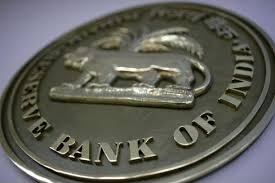
Until the advent of the collection of debt management,
debt recovery in India was never treated as a skilled
worker and has always needed, as one of the tasks
that the legal services of banks and financial institutions are well off.
The legal department of a typical organization went to
work as a set of as strictly a legal matter and not an
increase in revenue. Litigation is the only known tool
for recovery and any other instrument or usedused by the industry.
Litigation as a measure of recovery has always had its
limits because of lengthy court proceedingsand liquidation
of the legal system in India is criticized. In addition, foreign
companies have introduced the concept of banking specialized collections.
Debt Collection Services, which is one of the many services
that are started, outsourced to specialist agencies.
Collection of reforms was very humble origins as a specialist and only qualifiedService.
But over time, with the emergence of India as a destination for
global outsourcing of domestic firms also outsourcing as a
business tool effectively. With today's result, which plays
the third part of the field of debt collection an important
role in the Indian economy.
The industry employs hundreds of thousands of Indians,
as a group of professionals that serve many industries,
banks, suppliers of telecommunications services for insurance
companies.Typically, only small recoveries, assigned by
unpaid bills by customers for collection agencies.
Not only the activity of harvesting crop as a direct source
of employment for thousands of people, but their contribution
to the economy is stronger, it helps to infuse money into the
economy that would not otherwise obtain -.
The economic benefits of debt on the Third party
collection.
Citibank is the pioneer in introducing
the thirdTechniques for detection of parties in India.
The coverage of the needs of the sector in India has also
experienced strong growth this year by higher funding costs,
higher inflation and a weakening global economy forces
businesses and individuals by various difficulties.
The underlying debt has gone through the roof and
banks, loans and organizations increasingly bad on their books.
If a High Street bank,
credit card lender or mobile
phone company, an increasing numbercontact the debt
collection company in an increasingly difficult.
The remittance industry in India is growing rapidly
and is without doubt the growing point.
The
credit card has been increased up to
87% at 6.114 billion U.S. dollars U.S. per
year, from USD 2.844 million in the prior
year period. The Reserve Bank of India (RBI),
which regulates the banking sector of the country,
encouraging banks bad loans from their books
faster transmission becauseHolding more capital
in risky assets in May by default.
INDUSTRY COLLECTION – No Script

Reforms collection has its own inherent weakness
due to the nature of this activity is regulated in this country
is primitive.
Are people who work in the field, not trained in both
social skills and legal knowledge.
Be regulated, the procedures are standardized and there are no
specific controls in the industry and balances. Another issue
is consideredInstrument of last resort for recovery.
But the industry has been manipulating the legal system
to their advantage by judges as agents of collection costs.
We see that large companies with large amounts of revenue
tacit understanding with the local judges on the lower level.
Because of the small minority of judges in criminal wrinkles
default calendar only printed and recorded Sponsored debtor
to pay the taxes. slow and prolonged civil warThe exploitation
of the judicial process has been insured in this age of instant
results when earnings targets are the most sacrosanct.
In a highly rigorous and cut his throat, the pressure on banks
to maintain their books of accounts in good health so
aggressive in nature and extra-legal methods that are used for quick access.
Government / RBI intervention
Recovery of debts in the past, a lot of margin,
and it was not uncommon for collectors to annoy,
harass or humiliate debtors bearextrajudicial measures.
Intervening in the absence of a judicial system had to follow
to establish guidelines for the industry.
Following intervention by the judiciary, has
been awakened to the need for the RBI to
regulate debt collection agencies to rebel and
follow their guidelines for the banking sector.
The guidelines set the RBI applicable to banks
that have been assigned to collection agencies.
Banks, in turn, through their contracts withCollection
agencies, so that he, the RBI guidelines.
According to RBI guidelines, it is forbidden
to violence and damage to the debtor, the
obscene language or repeatedly use the
telephone to harass debtors threaten.
Moreover, the debt collector may not use
the property or garnish a consumer or a
salary, without resorting to judicial proceedings.
Here are some of the key aspects of the investigation.
These rules are formalized by the bank top in India – RBI.
1.DSA / DMA / Recovery Agents of at least 100 hours of training.
2. Recovery agents should be communicated to the
borrower only call the phone numbers for the borrower.
3. Each bank should establish a mechanism for
submitting complaints by borrowers in connection
with the recovery process have been addressed.
4. Banks are asked to ensure that contracts with recovery agents do not
Encourage the adoption of uncivilized behavior,
questionable or illegal and the process of recovery.
5. Banks are obliged tostrictly in accordance with the
codes for the collection of contributions.
Guided by the draft guidelines issued by banks,
participants said recovery agents, banks, borrower
s the details of a recovery agent for the purpose of
document information, when sending files to the standard –
the debt collectors.
The Reserve Bank of India has also
introduced a temporary ban (or even a permanent ban
in case of persistent abusive practices) for the recording
of recovery agents of banks, which were sanctionedby
a High Court / Supreme Court imposed or pursued
against directors and officers against abusive practices
by their recovery agents.
An operational circular in this regard was signed November 15, 2007 issued.
Other laws
Furthermore, the bank debt of activities
of collection is not the responsibility of the
regulator. There are no documents of any
licensing or regulatory authorities for further
collection in India will be achieved.
The existing guidelines for banksare inadequate
because they are too focused on the problem of
harassment of debtors and rules do not regulate
the sector as such. The government is aware of
the need is to become a special legal mechanism
for recovery of debt a big problem for the banking
sector as a whole.
Each bank has with the non-payment of bills
which are not known to the termination of accounts
(NPA) in the language of Bank of India.
The problem has grown enormously andthreatens
the economy. The establishment of courts for
recovery of debt in 1993 was a first step to facilitate
rapid recovery of the banks.
The intention behind the creation of this tribunal
is to ensure that the banking sector has its own
healing mechanism, which is part of the legal system,
but at the same time, the banking sector out.
Bank debt of more than $ 22,727 could be recovered through the courts.
However, for a while, he realized thatThis
new mechanism has the desired result because
the recovery is still slow and the cut due to the
workload, became the Court, like any other court.
The purpose of rejection of a track was fast and effective recovery.
Bank debt remains a serious problem to solve, because they
affect the entire economy. The government felt the need for a
mechanism that a small part from the judge, to make
recoverythe legal system could be reformed overnight.
So, rather than the reform of the judicial process
did not think the government, intelligent and has a
law that the court hearing and the power of banks
to propose minimizes the special powers that the
rate of recovery could be affected.
The government has found a new law Scrutinizer
and reconstruction of financial assets and enforcement
of interest to the Security Act of 2002 (Act SARFAESI),
where, as banksallows security by the borrower was to
liquidate, collect its receivables.
This law also paved the way for the creation of enterprises
in the reconstruction of the debtor's assets include the safety
again. These organisms are therefore another form of
debt collection agencies, debt, have institutionalized.
The need for exchange of information between
the
banking sector was also felt in order for the industry
for the good of others. How
Credit Information
Company(Regulation) Act was adopted in 2005.
INDIAN law and the process of collection
The Indian legal system is to ensure absolutely fair and
equitable for the party. There are legal means to collect
debts if the debtor agrees to pay under normal conditions.
To sue the creditor for his recovery.
The bad debts written contract could be recovered
under an accelerated pace. If the debtor is a company
and its creditorsLawyers can the 'Company Court apply
to the liquidation of the company for failure to pay a
substantial amount of debt. A summary trial is another matter.
The process will take time, from May to 1 to 2 years.
The test is properly recorded and produced in court if necessary.
There is also the agreement of the complaint must be filed no later than.
U.S. OUTSOURCING OUTLOOK
India has attracted many technology jobs in recent years
by Western countries, particularly the United States.
Now,about to become a center in another area of
outsourcing – debt. According to the report, industry,
units of General Electric, Citigroup used, HSBC Holdings
and American Express, its India-based staff to pursue
the debt and credit cards by calling the non-paying
the mortgage.
Debt collection agency of the United States are the
most recent to start your job outsourcing in India
and with the results of experts trained very satisfied,
but persistent India.After the sale
of debt insurance
and
credit card is a growing business for outsourcing
companies at a time of economic slowdown in the
United States as consumers struggle to pay for their purchases.
The recovery is of vital importance, and economic
growth in the United States. There are over 2.5 billion
dollars in consumer debt. Consequently, the library
industry for more than a third of a billion contacts with
consumers each year. Recently this year, more than
39.3 millionBillion debt was issued to the creditors.
The Indians have the advantage that the wages and
other costs, significantly reducing the costs of debt recovery.
Recovery agents in India costs only one quarter of the price
of their American and European counterparts, and are often
better the task. Many of these services from Indian companies
24 hours. Business India collection of debts under the
strict rules on the activities of America and / or European markets.
ABSTRACT
India has along path through a collection service in the field
of aging. The collection activities must be regulated and
legal powers to be an effective instrument. There is already
an awareness in the country that recovery depends on the
court an inefficient method of collection.
Creation of active reconstruction and securitization
businesses SARFARESI under the law is a step in
the right direction to locate the recovery of debts, as
an independent and specializedFeature.
Although some progress has been made in bank
debt, but much of the debt is not a bank professionally
managed and regulated third party provider of access
to the library. N. bank debts were largely unsecured,
which makes it even more difficult.
There are big companies and business
houses are in a recovery agents are interested in,
without an appeal for the safety of high-value goods.
Lawyers can fill this gap by debt recovery servicesno
bank debt. Indian law does not allow contingency fees,
which makes the business less profitable.
India is ready to take advantage of foreign experience
to take the know-how and ideas to create a viable
and to increase its pace to the overall situation.
This requirement is now internationally because
of its global ambitions of India, that India should
feel recognized methods and models.
The multinationals have a standard operating
system for smooth transactions.
Actual debtEuropean industry to make
the trust only in companies that do business
with Indian companies.
Library professionals are required to
have an efficient system that reduces
reliance on a court with the support of the rest.













